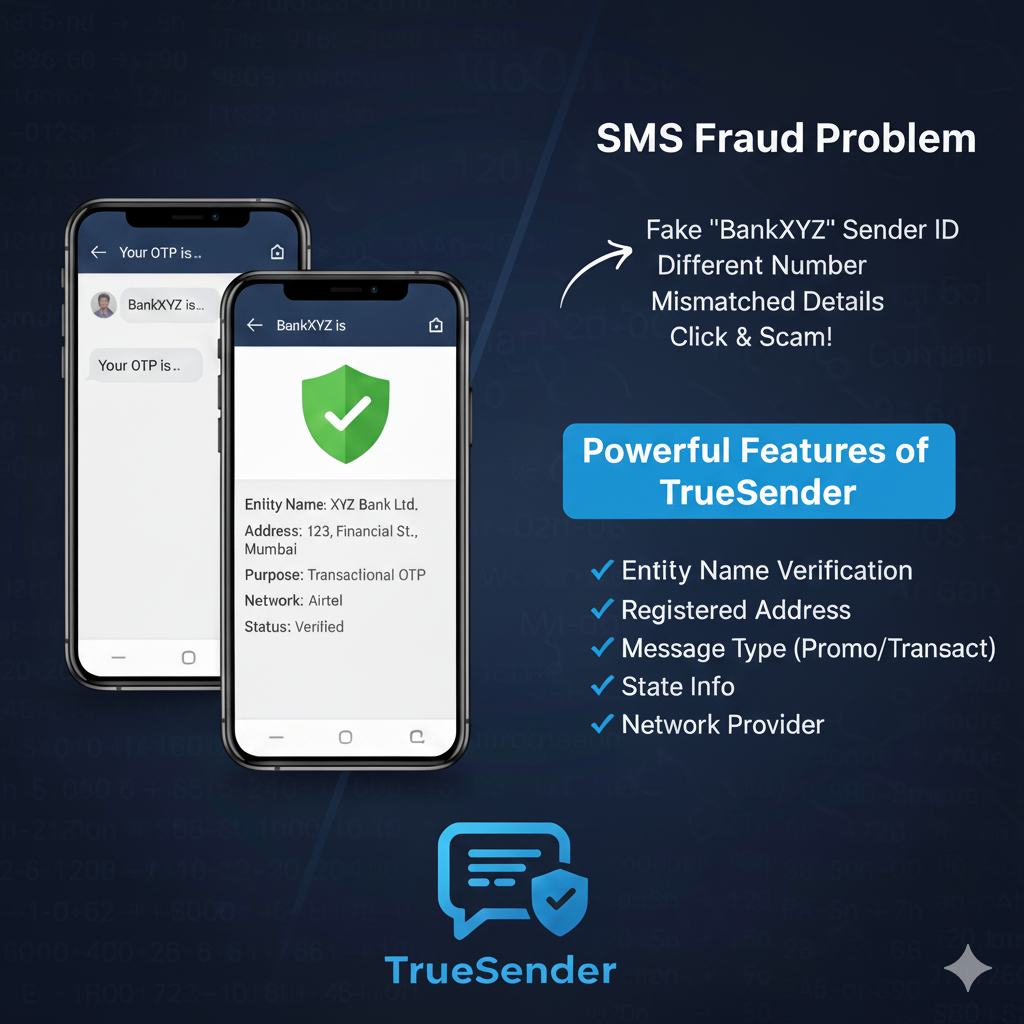There is a lot of news about SMS spamming and phishing messages in the country. If you receive an SMS, you will need to provide the sender ID, which will be sent to you. What is the sender, address, and purpose of the message? If you are a true TrueSender user, you will need to provide the following information:
SMS Fraud Problem
Send an SMS to someone with the name “BankXYZ” saying “Your OTP is…”
But it turns out that the sender number is different, the address or name does not match
You click on the link, you fall for a scam
Powerful Features of TrueSender
Entity Name Verification
Many people use fake names beyond the sender ID. TrueSender displays the real entity name from the DLT/regulatory database.Address / Registered Location
The organization or business that is the sender will show the details of where the registered address is. If the address is mismatched, it can be a scam.Purpose / Message Type
There are new applications like SMS promotional, transactional, service in the government category. For example, send a message "Offer Discount" in the promotional section, send a message "Bank Alert / OTP" in the transaction.State
The address information of the state from where the sender sent the SMS.Network Provider
You can see the Network Provider used to send the message.
Technology Behind TrueSender
TrueSender DLT data is used to verify sender registration info.
Suspicious links are detected by AI / heuristics algorithm use.
Privacy is respected - app SMS content is not read, only metadata is used. Your data is stored locally on the device.
User Flow
Install the app (with Play Store "TruSender: Verify SMS Sender") Google Play
SMS permission available
If you have SMS, TrueSender is there to verify the background
Open it, see the sender details Entity name, address, state, network, purpose
We suspect you don't need to block.
A Guide to Verifying Financial SMS Senders
Scammers frequently use sender IDs that closely mimic those of legitimate companies to deceive recipients. While an SMS might show a sender ID like XYZBNK, a reliable verification tool can reveal the sender's true identity.
Here's a breakdown of how to verify and protect yourself:
Look Beyond the Sender ID: The sender ID displayed on your phone, such as "BnkXYZ" or "XYZBNK," can be easily spoofed. The key to verification lies in checking the full details.
Utilize a Verification Service: Services like TrueSender provide detailed information that goes beyond the sender ID. This includes:
Entity Name: The legally registered name of the sender.
Address: The physical location of the business.
Message Type: Categorization (e.g., Transactional OTP, Promotional).
The Crucial Discrepancy: Even if a sender ID appears similar to a trusted brand (e.g., XYZBNK), a verification service will display the official Entity Name. A mismatch between the sender ID and the verified entity name is a strong indicator of a fraudulent message.
Actionable Advice:
If the sender ID seems close but the verified entity name is different, or if you don't recognize the entity at all, do not click on any links or provide any information. Delete the message and, if necessary, contact your actual bank using their official, verified contact information.
Benefits
Protect from Spam / fraud messages
Enhance Spam filtering
Cleaner inbox, build trust
Strengthen trust and security
